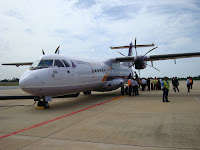

PlacidWay, a medical tourism portal based in Denver, Colorado is pleased and proud to announce the inclusion of Wooridul in their network for superlative, accredited, and high-class patient care and hospital facilities offering American and international patients resources necessary for making informed medical decisions. Says Pramod Goel, CEO of PlacidWay, "We're proud to offer Wooridul as an excellent medical destination for clients seeking the best practices in care for spinal disorders and treatments. Advanced spinal surgical techniques engaged at Wooridul offer patients state-of-the-art technology and expertise to treat a multitude of back and spine injuries."
Wooridul has offered dedicated care and expertise to patients for over 28 years in the treatment of Minimal Invasive Spinal Surgery(MISS), metastatic spine cancers, spine disorders, as well as advanced medical treatment and technologies. Multi-disciplinary teams offer internal medicine, orthopedic surgeons, thoracic and general surgeons as well as rehabilitative physicians in an integrated team management approach for patients experiencing a wide variety of back injury or disease processes. With centers located in Seoul, Daegu, Busan in South Korea, and Shanghai, China. Wooridul continues to dedicate total care in neuro-musculoskeletal conditions in Abu Dhabi, UAE and Spain by year.
Microscopic and endoscopic spine surgery endoscopic spine surgery , CT guided spine surgery, disc replacement, and laparoscopic surgery help correct displacements, deformities, and joint injuries. Mr. James Hwang Lee, head of Wooridul International Patients Center (WIPC) states, "We take great pride in the prestige of our highly trained and qualified medical staff at Wooridul Spine Hospital. We are guided by the principle that there is no incurable disorder or disease. Our facilities and equipment are world-class and our medical staff practices innovative, accredited and effective techniques and procedures."
Says Goel, "PlacidWay is pleased to join with Wooridul in forging a new frontier in medical tourism that offers help for millions suffering from back problems or injuries." PlacidWay is a rapidly expanding online resource for the medical tourism industry, providing up-to-date information and resources regarding treatments, facilities, foreign destinations and accreditation for healthcare providers throughout the globe.
Wooridul Spine Hospital focuses treatments on minimally invasive principles and has developed spine treatments involving open and minimally invasive approaches through the cooperation and expertise of physicians, surgeons and support staff dedicated to providing the best in care and compassion to international patients.





![Reblog this post [with Zemanta]](http://img.zemanta.com/reblog_e.png?x-id=9b6a438b-463f-493a-85b2-08af83bd7d6b)







